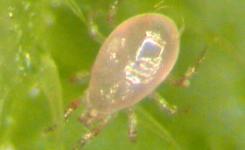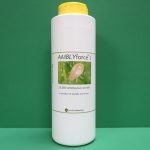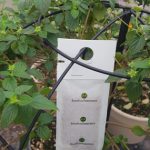Description

Amblyseius swirskii is a predatory mite useful in the control of whitefly predominantly, and with some impact to spider mites as a noted side benefit. Over the past few years these predatory mites have also demonstrated the ability to suppress whiteflies and may also feed on spider mites, possibly including broad mites and other tarsonemid mites.
A. swirskii are normally shipped as adults and are very similar to A. cucumeris in terms of color, unless they take on coloration of their diet — but they appear smaller and have a non-segmented pear-shaped body. They cannot be readily distinguished from A. cucumeris with the naked eye. Like A. cucumeris this species can consume pollen in the absence of pests making them useful preventively (they are also alternatively supplied in slow-release packets like A. cucumeris). These mites can also be used in hotter conditions than A. cucumeris provided a fairly high relative humidity is maintained on the leaf surface.
Life-style
If sufficient food is available and conditions are favorable, A. swirskii are known to establish well and may stay where they are put (where they are needed) cleaning up before spreading their range. A lot, however, does depend on the humidity on the leaf’s under surface. If too dry the eggs will not hatch so one will be forced to make do with the adults being released.
Benefits
In addition to the attributes noted above, A. swirskii do not undergo diapause due to short day-lengths or low temperatures meaning they can be used late into the fall and into the winter indoors. Bear in mind, though, that at around 59° A. swirskii will become inactive — becoming active again when temperatures rise.
A. swirskii have a good appetite: They can eat up to to 19 whitefly eggs/15 larvae per day.
Drawbacks
We advise the use of caution if using A. swirskii in a greenhouse where Phytoseiulus persimilis or Aphidoletes aphidimyza are in use. There could possibly be a compatibility issue.
Other challenges may exist. For example, A. swirskii may avoid honeydew from whiteflies and the webbing of certain spider mites. How much these factors will contribute to the overall success of this predator remains to be seen (see Advisories).
Scouting
Advisories
Usages
Release Rates for Amblyseius swirskii
| Classification | Release Information |
|---|---|
| Shaker tube | 2-5/sq.ft., bi-wkly, as needed |
| Bulk bag | 2-5/sq.ft., bi-wkly, as needed. Use provided scoop. |
| Slow release sachets | Every 6 feet of crop row, monthly as needed |
| Alert: | Release rate suggestions on these pages are usually not sufficient for cannabis growers. For cannabis release rates check out our Cannabis page or contact us with questions. 1 (800) 477 3715. |




